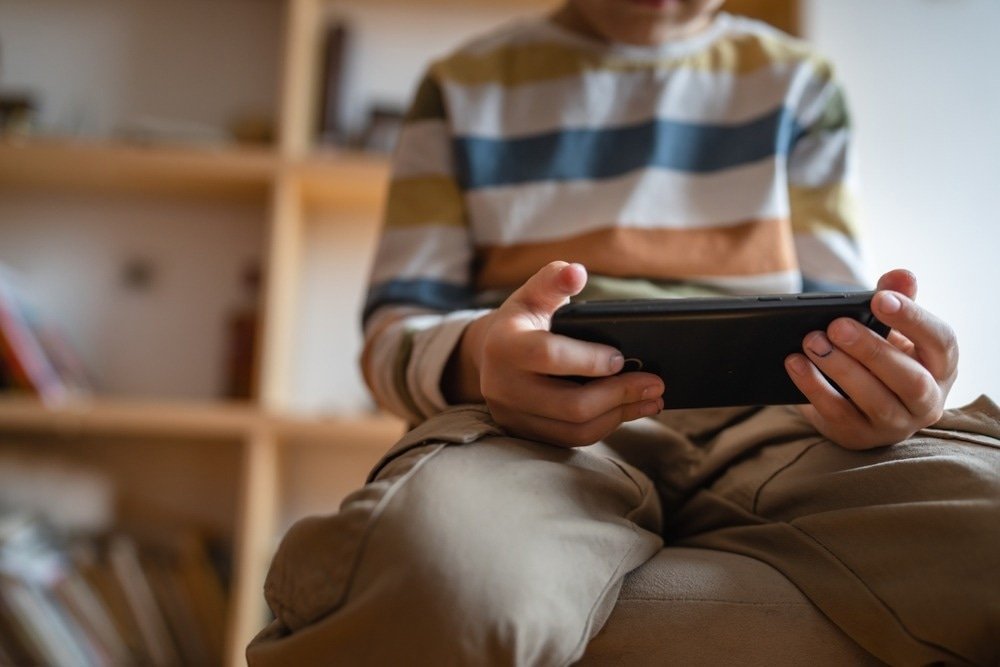Blog
Does lowering display media employ throughout leisure time enhance the psychological well being of kids and adolescents?
In a just lately printed research Researchers investigated whether or not decreased employ of display media throughout leisure time improves psychological well being in adolescents and youngsters.
Their outcomes recommend that lowering display time resulted in fewer behavioral difficulties, with a noticeable lower in peer and emotional issues, as effectively as an enchancment in optimistic social interactions.
background
The psychological well being of many kids and youngsters around the globe is deteriorating. Within the US, almost 30% of children reported poor psychological well being in a current survey, and in Europe, 25% of youngsters suffered from psychological well being issues akin to nervousness and sleep problems.
Adolescence is a delicate interval throughout which the employ of digital applied sciences has elevated considerably. Display screen media has turn out to be a central fragment of lifestyle for leisure and communication. There are considerations in regards to the damaging results of display media on psychological well being, however analysis findings are combined.
Some research present a hyperlink between excessive display employ and poor psychological well being, however these are principally observational. Extra analysis is required to know whether or not lowering display employ can profit the psychological wellbeing of adolescents and youngsters.
Concerning the research
Researchers analyzed the short-term Effectiveness of Display screen-Based mostly Media Employ Discount Trial (SCREENS), an in depth research of 89 households in Southern Denmark.
This trial used the cluster randomization technique, the place households had been randomly assigned to both cut back their display time or keep their present habits.
Within the intervention group, households had been requested to scale back their display time to lower than three hours per week for 2 weeks and at hand over their tablets and smartphones. The management group maintained their regular display employ.
To measure the affect of this intervention, researchers used a instrument known as the Strengths and Difficulties Questionnaire (SDQ). This questionnaire, accomplished by mother and father at first and discontinuance of the research, assesses varied behavioral and emotional issues in kids.
To investigate the information, the researchers used regression fashions that allowed them to account for every research’s cluster design (households moderately than people) and to consider variables akin to age. Adherence to display time discount was excessive, that means most households adopted directions carefully.
Their goal was to search out out whether or not lowering display time had a optimistic affect on the psychological well being of kids and adolescents, particularly analyzing their behavioural strengths and difficulties. Utilizing this rigorous technique, the researchers aimed to offer clear and dependable outcomes on the short-term results of decreased display media employ.
Outcomes
A whole of 181 kids took fragment within the research, 86 within the intervention group and 95 within the management group. The youngsters within the intervention group had been on common 8.6 years frail; 49% had been women. Within the management group, the youngsters had been on common 9.5 years frail; 60% had been women.
Researchers discovered that the general psychological well being of kids who spent much less time in entrance of screens improved considerably.
The whole issue rating, which measures behavioral and emotional issues, decreased on common by 1.67 factors extra within the intervention group than within the management group. This end result corresponds to a average impact dimension.
The research additionally discovered that the best enhancements occurred in internalizing signs akin to emotional issues and peer issues, which declined on common by 1.03 factors extra within the intervention group. As well as, the prosocial conduct rating, which signifies optimistic social interactions, elevated by 0.84 factors extra within the intervention group.
The researchers discovered comparable outcomes after they analyzed the information with out taking age into consideration. In addition they discovered that the outcomes had been extra pronounced in boys than in women and in these kids who had increased general issue scores or who used display media extra incessantly earlier than the intervention.
These findings recommend that lowering leisure display time might believe optimistic results on kids’s psychological well being, notably by lowering emotional and peer-related issues and selling optimistic social interactions.
Conclusions
The research confirmed that lowering display time over two weeks improved the psychological well being of kids and adolescents, notably by lowering emotional and peer-related issues and selling optimistic social interactions.
This research is one among the primary to take a look at lowering display time in households and confirms findings from earlier observational research exhibiting that prime display time is related to poorer psychological well being. In distinction to earlier research with negligible impact sizes, this research discovered a average impact dimension.
The strengths of this research embody its randomized design and real-world setting, which assist robust causal inferences. Goal measures of display time and low dropout charges additionally contributed to the reliability of the outcomes.
Nevertheless, the research has limitations. The short-term intervention might not mirror long-term habits, and parent-reported measures may very well be biased. As well as, the research concerned extremely motivated households, which can restrict generalizability.
Future analysis ought to look at the long-term results of decreased display time, discover the consequences of various kinds of display media, and ensure these findings in high-risk teams. To develop efficient interventions, it’s vital to know how household involvement contributes to those outcomes.
Journal reference:
- Display screen media employ and psychological well being in kids and adolescents: A secondary evaluation of a randomized scientific trial. Schmidt-Persson, J., Rasmussen, MGB, Sørensen, SO, Mortensen, SR, Olesen, LG, Brage, S., Kristensen, PL, Bilenberg, N., Grøntved, A. (2024). doi:10.1001/jamanetworkopen.2024.19881 https://jamanetwork.com/journals/jamanetworkopen/fullarticle/2821176

